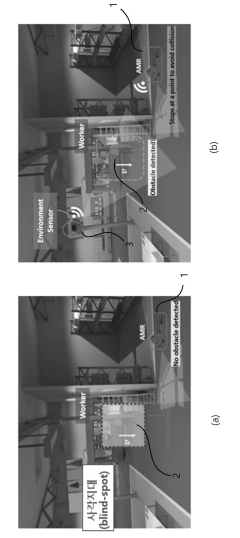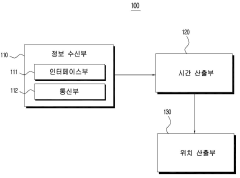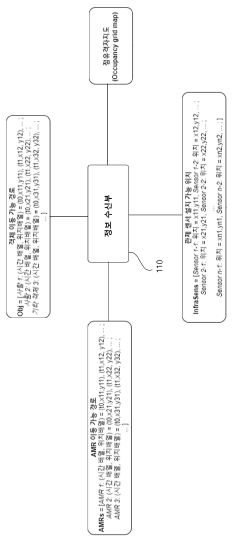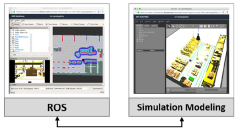Research on the development and application of Autonomous Mobile Robots (AMRs) - Eureka
OCT 8, 20244 MIN READ
Generate Your Research Report Instantly with AI Agent
Patsnap Eureka helps you evaluate technical feasibility & market potential.
Development History and Goals of AMRs
The primary objective is to provide a comprehensive overview of the development history and current landscape of Autonomous Mobile Robots (AMRs), while identifying key technological trends and milestones that have shaped this field. This section will trace the evolution of AMR technology from its early beginnings to the present day, highlighting major breakthroughs, pioneering solutions, and the driving forces behind its advancement.
Additionally, it will outline the anticipated future trajectory of AMR technology, forecasting potential game-changing innovations and the ultimate goals that researchers and developers are striving to achieve. By examining the historical context and future prospects, this section aims to establish a solid foundation for understanding the current state of AMR technology and its potential impact on various industries and applications.
Additionally, it will outline the anticipated future trajectory of AMR technology, forecasting potential game-changing innovations and the ultimate goals that researchers and developers are striving to achieve. By examining the historical context and future prospects, this section aims to establish a solid foundation for understanding the current state of AMR technology and its potential impact on various industries and applications.
Market Demand for Autonomous Mobile Robots
- Growing Demand for Automation
The market demand for AMRs is driven by the increasing need for automation across various industries to improve efficiency, productivity, and safety. Sectors like manufacturing, logistics, healthcare, and retail are actively adopting AMR solutions. - Labor Shortage and Cost Optimization
AMRs offer a viable solution to address labor shortages and optimize operational costs, particularly in repetitive and labor-intensive tasks, making them attractive for businesses seeking cost-effective alternatives. - E-commerce and Logistics Boom
The rapid growth of e-commerce and the logistics sector has fueled the demand for AMRs in warehouses, distribution centers, and last-mile delivery operations, enabling efficient material handling and transportation. - Increasing Adoption in Healthcare
The healthcare industry is embracing AMRs for tasks such as material transportation, disinfection, and delivery of medical supplies, enhancing operational efficiency and reducing the risk of human error or exposure. - Technological Advancements
Advancements in areas like artificial intelligence, computer vision, and sensor technologies have made AMRs more capable, reliable, and cost-effective, driving their adoption across various market segments.
Current State and Challenges of AMR Technology
- Current Technological Landscape
Outline the current state of AMR technology, highlighting key advancements, adoption rates, and geographical distribution. - Technical Challenges
Identify major technical hurdles hindering widespread AMR deployment, such as navigation, obstacle avoidance, and integration with existing infrastructure. - Regulatory and Safety Concerns
Discuss regulatory frameworks, safety standards, and potential risks associated with AMR operation in public and industrial environments.
Key Players in the AMR Industry
The Autonomous Mobile Robots (AMRs) market is rapidly expanding, driven by industries like manufacturing, logistics, and healthcare. Companies like Seegrid Corp., Mobile Industrial Robots A/S, and ForwardX Robotics, Inc. are leading with advanced solutions. Tech giants like Intel Corp. and Siemens AG are heavily investing, indicating a robust competitive landscape. Automotive companies like Ford Global Technologies LLC and Hyundai Motor Co., Ltd. are also involved, showcasing AMRs' broadening application potential.
Seegrid Corp.
Technical Solution: Seegrid Corp. offers vision-based AMRs for material handling in warehouses and manufacturing facilities, leveraging advanced vision systems and machine learning algorithms.
Strength: Robust vision-based navigation. Weakness: Limited to specific industrial applications.
Mobile Industrial Robots A/S
Technical Solution: Mobile Industrial Robots A/S (MiR) specializes in sensor-equipped AMRs for internal logistics, autonomously transporting goods in dynamic environments.
Strength: High flexibility and ease of integration. Weakness: High initial investment cost.
Core Technologies in Autonomous Mobile Robots
Optimal control sensor position calculation device and method for calculating optimum control sensor position using the same
PatentActiveKR1020230151265A
Innovation
- Actively conducting technology development for autonomous mobile robots (AMRs) that perform various tasks or services
- Developing AMRs for various applications and services
Regulatory and Safety Standards for AMRs
Autonomous Mobile Robots (AMRs) are intelligent robotic systems capable of navigating and operating autonomously within various environments. The development of AMRs has been driven by advancements in artificial intelligence, sensor technology, and robotic control systems. These robots have the potential to revolutionize industries such as manufacturing, logistics, healthcare, and service sectors by enhancing efficiency, productivity, and safety. The market demand for AMRs is expected to grow significantly due to their ability to automate repetitive tasks, reduce labor costs, and improve operational flexibility. However, challenges such as navigation in dynamic environments, obstacle avoidance, and integration with existing infrastructure need to be addressed. Key players in this field include established robotics companies and technology giants investing in AMR research and development.
Environmental Impact of Autonomous Mobile Robots
Autonomous Mobile Robots (AMRs) are intelligent robotic systems designed to navigate and operate autonomously in various environments without human intervention. These robots leverage advanced technologies like computer vision, sensor fusion, and artificial intelligence to perceive their surroundings, plan paths, and execute tasks efficiently. AMRs have gained significant traction across industries such as manufacturing, logistics, healthcare, and retail, offering improved productivity, safety, and cost-effectiveness. With their ability to automate repetitive and labor-intensive tasks, AMRs are poised to revolutionize material handling, inventory management, and last-mile delivery operations. As technology advances, AMRs are expected to become more intelligent, adaptable, and collaborative, enabling seamless integration into dynamic and complex environments.
Unlock deeper insights with Patsnap Eureka Quick Research — get a full tech report to explore trends and direct your research. Try now!
Generate Your Research Report Instantly with AI Agent
Supercharge your innovation with Patsnap Eureka AI Agent Platform!



